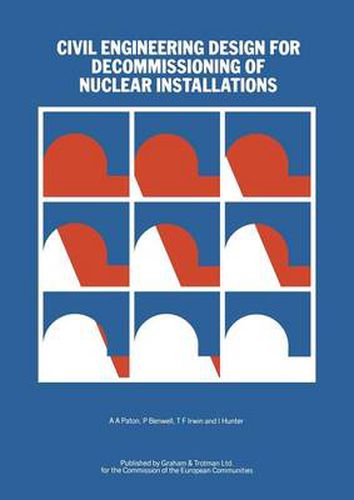Readings Newsletter
Become a Readings Member to make your shopping experience even easier.
Sign in or sign up for free!
You’re not far away from qualifying for FREE standard shipping within Australia
You’ve qualified for FREE standard shipping within Australia
The cart is loading…






This title is printed to order. This book may have been self-published. If so, we cannot guarantee the quality of the content. In the main most books will have gone through the editing process however some may not. We therefore suggest that you be aware of this before ordering this book. If in doubt check either the author or publisher’s details as we are unable to accept any returns unless they are faulty. Please contact us if you have any questions.
35 9.2 TYpical PWR Station Layout 36 9.3 Regions of Highest Radiological Hazard 38 9.4 Decommissioning Scenarios 40 9.5 Existing Structural Features of a PWR which may aid Decommissioning 42 9.6 Structural Features that might be introduced into Future PWR Stations to aid Decommissioning 43 10. REFERENCES 44 11. ACKNOWLEDGEMENTS 45 12. TABLES AND FIGURES 45 APPENDIX A - SUPPLEMENTARY INFORMATION 98 1 1. INTRODUCTION 1.1 This report describes the work carried out by Taylor Woodrow Construction Limited (!WC) in a study aimed at identifying features Which may be incorporated at the design stage of future nuclear power plants to facilitate their eventual decommissioning and, in so dOing, promote economic and radiological benefits at the decommissioning stage. 1.2 For the purposes of this study, decommissioning of a nuclear facility means those measures taken at the end of the facility’s operating life to remove it from the site and restore the site to green field conditions, and, While so doing, ensure the continued protection of the public from any residual radioactivity or other potential hazards present in or emanating from the facility. The overall decommissioning process involves eventual dismantling and demolition and may also include, Where possible and appropriate, the intermediate steps of renewal and refurbishing.
$9.00 standard shipping within Australia
FREE standard shipping within Australia for orders over $100.00
Express & International shipping calculated at checkout
This title is printed to order. This book may have been self-published. If so, we cannot guarantee the quality of the content. In the main most books will have gone through the editing process however some may not. We therefore suggest that you be aware of this before ordering this book. If in doubt check either the author or publisher’s details as we are unable to accept any returns unless they are faulty. Please contact us if you have any questions.
35 9.2 TYpical PWR Station Layout 36 9.3 Regions of Highest Radiological Hazard 38 9.4 Decommissioning Scenarios 40 9.5 Existing Structural Features of a PWR which may aid Decommissioning 42 9.6 Structural Features that might be introduced into Future PWR Stations to aid Decommissioning 43 10. REFERENCES 44 11. ACKNOWLEDGEMENTS 45 12. TABLES AND FIGURES 45 APPENDIX A - SUPPLEMENTARY INFORMATION 98 1 1. INTRODUCTION 1.1 This report describes the work carried out by Taylor Woodrow Construction Limited (!WC) in a study aimed at identifying features Which may be incorporated at the design stage of future nuclear power plants to facilitate their eventual decommissioning and, in so dOing, promote economic and radiological benefits at the decommissioning stage. 1.2 For the purposes of this study, decommissioning of a nuclear facility means those measures taken at the end of the facility’s operating life to remove it from the site and restore the site to green field conditions, and, While so doing, ensure the continued protection of the public from any residual radioactivity or other potential hazards present in or emanating from the facility. The overall decommissioning process involves eventual dismantling and demolition and may also include, Where possible and appropriate, the intermediate steps of renewal and refurbishing.